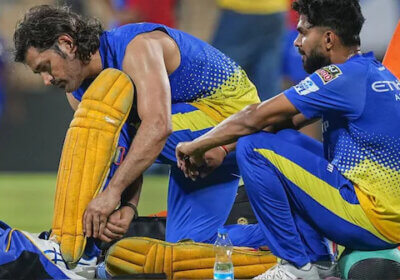Rahul Gandhi and Sharad Pawar interact as the opposition’s poll strategy takes shape
The opposition is equally split between the 1996 United Front model, which keeps Congress outside, and the 2004 United Progressive Alliance model, which places Congress at the center.
Nitish Kumar, the chief minister of Bihar, met with representatives from the Left and the Congress during a two-day visit to Delhi, which is viewed as the first step in developing a strong opposition plan for the 2024 Lok Sabha elections.
The discussions over the previous two days highlight two options for the opposition:
# The United Progressive Alliance model from 2004 with Congress as the center, or
# The United Front model from 1996 with the Congress kept outside.
The opposition is split evenly between these two camps
# The 1996 model has the support of the Trinamool Congress, Samajwadi Party, Bharat Rashtra Samithi, and Aam Aadmi Party.
# However, three significant opposition groups — the DMK, NCP, Left parties, and the RJD — insist that Congress must be at the center of any opposition formation to mount a serious challenge to the BJP.
The Congress Initiatives
The Congress requested that Mr. Kumar start talking to the parties that aren’t “comfortable” with the Congress during his meeting with President Mallikarjun Kharge and senior leader Rahul Gandhi, underscoring the significance of the 1996 model.
Following up on his meeting with Mr. Kumar, Mr. Kharge met with NCP leader Sharad Pawar, along with Mr. Gandhi and general secretary K.C. Venugopal.
Mr. Pawar’s statement after the meeting
“Discussions with the leaders of each opposition party are something I want to see. Both Mamata Banerjee and Arvind Kejriwal… We should visit them and speak with them. To unify the opposition, we will advance while bringing everyone with us, Mr. Pawar told the media after the conference.
Statements of Congress Leaders
“We are all unified,” said Mr. Rahul Gandhi. We are all committed to it, he continued, adding that this is just the first step in trying to bring the Opposition parties together.
“We are stronger when we work together! To give our people a better, more promising, and equal future, we stand together,” Mr. Kharge wrote in a tweet.
No opposition alliances can be created without them, according to repeated statements from Congress.
Mr. Nitish Kumar’s Decision
The former model offers Mr. Kumar a better outlook for the future, even though he has publicly backed an opposition front led by Congress.
Initiatives to build a strong opponent front
A stronger joint opposition conference is scheduled for later this month after Mr. Kharge and Mr. Kumar have spoken to both camps.
Mr. Kumar met with Sitaram Yechury, the general secretary of the CPI(M), and D. Raja, the general secretary of the CPI, on Thursday before heading back to Patna in time for Ambedkar Jayanti on Friday.
The strategy of three lines
Mr. Yechury told the news organization that the opposition needed to work on three lines at once after their conversation with Mr. Kumar.
- At the State level, the seat-sharing plan must be formulated while taking into account the political quirks to maximize the anti-BJP votes.
- Second, the frontline leadership of the opposition parties must launch a coordinated campaign at the national level to highlight the importance of preserving India’s socio-democratic nature and its constitutional framework.
- The threat to the federal government’s structure and the relationship between the Center and the States are two issues on which the third level has come together.
Mr. Raja claimed that the opposition talks had only one goal in mind: to defeat the BJP in the elections in 2024. “Our country is in a state of turmoil, and every aspect of our society has expressed their outrage at the BJP’s mismanagement. To safeguard our democracy and our citizens, secular-democratic forces must band together,” he said.























Pingback: Nitish Kumar Meets Mamata Banerjee, Tejaswi Yadav Joins